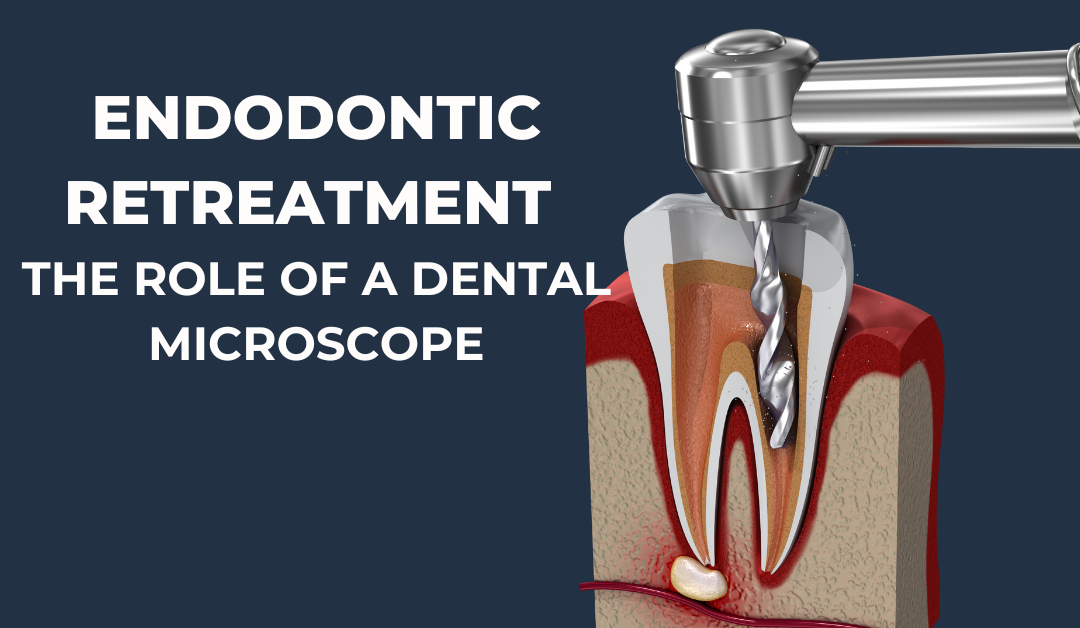Single-Visit vs. Multi-Visit Endodontic Treatments: Evidence-Based Approaches
.png)
One of the most highly-debated topics in the endodontics field is whether root canal treatments are best performed in a single visit or multiple visits. While each approach has its merits, evidence-based research offers valuable insights into the clinical outcomes, benefits, and considerations associated with each method.
This article examines the key factors in deciding between single-visit and multi-visit endodontic treatments and how advanced technology, like dental microscopes, plays a pivotal role in achieving optimal outcomes for both.
The Debate: Single-Visit vs. Multi-Visit Treatments
In endodontics, the objective of root canal therapy (RCT) is to thoroughly clean, disinfect, and seal the root canal system to prevent reinfection. The decision to perform this procedure in one or multiple visits often depends on clinical factors, patient preferences, and the dentist’s training or expertise. Below, we explore the core arguments for each approach.
Single-Visit Endodontic Treatment
Advantages of Single-Visit Treatment
- Patient Convenience: One of the primary advantages of single-visit root canal therapy is convenience. Patients benefit from fewer appointments, which can reduce overall chair time, minimize patient discomfort, and result in faster overall treatment.
- Immediate Sealing: In a single visit, the root canal is cleaned, shaped, disinfected, and sealed. This reduces the potential for reinfection, as the canal system is sealed immediately, preventing bacterial ingress between appointments.
- Reduced Risk of Temporary Restorations Failing: Temporary restorations, often used between multi-visit procedures, can be dislodged or compromised, increasing the risk of contamination. By completing the treatment in one visit, this risk is eliminated.
Challenges of Single-Visit Treatment
- Time Constraints: Single-visit treatments may require extended chair time, particularly in complex cases involving multiple canals or challenging anatomy. Long appointments can be tiring for both the dentist and the patient.
- Case Selection: Single-visit treatments may not be suitable for cases involving significant infection, swelling, or difficult anatomy. These cases may require additional time for bacterial reduction and symptom resolution before obturation.
Evidence Supporting Single-Visit Endodontics Research suggests that single-visit treatments can be as effective as multi-visit treatments in many cases, particularly for teeth without periapical pathology or significant infection. Studies have demonstrated comparable long-term success rates, showing that single-visit treatments do not compromise the quality of disinfection or seal.
Multi-Visit Endodontic Treatment
Advantages of Multi-Visit Treatment
- Infection Control: For cases involving significant bacterial infection or abscesses, a multi-visit approach allows for the application of intracanal medicaments, such as calcium hydroxide, between appointments. These medicaments help reduce bacterial load over time, promoting healing before the final obturation.
- Symptom Management: Multi-visit treatments can provide time for symptoms such as swelling or pain to subside before proceeding with the next phase of treatment. This approach is particularly helpful for patients presenting with acute symptoms.
- Increased Clinical Control: With more time between appointments, dentists can thoroughly assess treatment progress and make adjustments as needed. This is especially important in complex or high-risk cases.
Challenges of Multi-Visit Treatment
- Risk of Reinfection: Leaving the root canal system open between visits, even with temporary restorations, increases the risk of reinfection or contamination. If the temporary restoration is compromised, bacteria may re-enter the canal system, complicating the treatment.
- Patient Compliance and Comfort: Requiring patients to return for multiple visits can result in reduced compliance, missed appointments, and increased patient discomfort. Multiple visits may also increase overall treatment cost and chair time.
Evidence Supporting Multi-Visit Endodontics Studies supporting multi-visit endodontics often highlight its effectiveness in cases with extensive infection. Research shows that in cases where intracanal medicaments are used, bacterial reduction is enhanced, especially when compared to immediate obturation in severely infected teeth. Multi-visit approaches may also provide greater flexibility for managing post-operative pain and complications.
Conclusion: Evidence-Based Approaches for Optimal Outcomes
The decision between single-visit and multi-visit endodontic treatments ultimately depends on a range of factors, including the complexity of the case, the level of infection, and patient preferences. Evidence supports both approaches as effective, provided the treatment is executed with precision and care.
At Global Surgical, we believe that no matter which approach is chosen, advanced technology like dental microscopes plays an indispensable role in ensuring the success of root canal therapy. By offering enhanced visualization and precision, our microscopes empower clinicians to deliver the highest standard of care, whether they are completing treatment in one visit or over multiple appointments.
For over three decades, Global Surgical has been committed to advancing dental technology to support endodontists in their pursuit of clinical excellence. As evidence continues to emerge on the efficacy of single-visit and multi-visit treatments, our goal is to equip professionals with the tools they need to make informed decisions and provide the best possible care for their patients.
If you’re considering adding a microscope to your practice or you just want to learn more about utilizing a dental microscope, we are here to help! Please feel free to reach out at 800-861-3585 or by clicking the button below.


.png)
